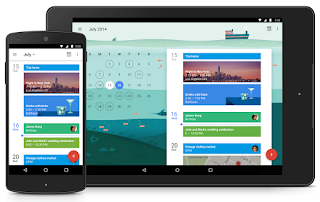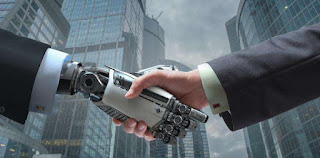The man looking over the water gauges couldn't believe what he was seeing...
Just down the road, a few miles from his little control room, the giant tank holding Robinson Township's municipal water supply was draining down... fast.
He looked at the clock. Midnight. The thermometer registered an icy 20 degrees. Somewhere out there, among the Pittsburgh suburbs' 15 square miles of snow-covered neighborhoods and businesses, a water main was losing more than 3,000 gallons of water a minute.
He checked his dials again and did some quick calculations. The township's storage tank held 1 million gallons of water. At this rate, all of it would be gone before dawn.
But exactly where was the water leaking? Where was the pipe break?
He had no idea.
The answer came five hours later.
A ruptured water main in the town's commercial district drained off the majority of the township's supply and left six inches of standing water on the floor of a neighboring Toys "R" Us (not to mention - with little available water for the day, it forced schools to close).
You read about this stuff all the time. For cities around the country, water main breaks are a fact of life.
Or are they?
This is where one of the investing mega trends - the Internet of Things (IoT) - has a rising impact.
IoT to the Rescue
What if you could place sensors in underground water mains, fire hydrants and elsewhere within a piping system, each transmitting bits of data to the town water department?
Put dozens or hundreds of those sensors together, spitting out minute-to-minute information on flow rates and water pressure, and the location of a million-gallon water main break in the middle of the night is no longer such a mystery.
Most breaks, however, aren't so dramatic or obvious.
Think of a pinhole leak in an underground water main. It might seep a comparatively small amount of water - dozens or a few hundreds of gallons a day. But add up all those leaks in a network of pipes hundreds of miles long, and you're talking about a lot of wasted H2O.
For instance, Philadelphia's water department pumps 250 million gallons of water through its municipal system each day. Experts say about a quarter of the water never actually reaches the businesses and residences on the other end of its pipes. That's 60 million gallons of water lost today. And tomorrow. And the day after that.
Until recently, good luck trying to find even a small portion of those leaks. It's like trying to find a needle in a stack of needles.
Unless you have IoT.
Powering New Efficiencies
You can imagine how precious water is in a place such as Las Vegas. Well, the region's water district recently installed Internet-connected sensors to the buried water mains running right down the center of the Las Vegas Strip.
The devices monitor the physical integrity of the pipe walls on a real-time basis. Such efforts have helped the water district identify more than 1,600 leaks in its system and saved nearly 300 million gallons of water.
That's just one water system. Keep in mind, the United States has more than 150,000 city, county and regional water authorities. That's a lot of water saved (and a lot of money too).
The Internet of Things is about more than just detecting leaks in water mains, of course. But it demonstrates in just one way the growing use of the IoT and why it's such an investable mega trend.
Google is a type of search engine that gives the facility of browsing from various devices such as the laptop, mobile etc. Recently, Google developed material design so that it can unify the experienced users to use various Google platforms. The aim of this unification is to improve the overall technological experience of a user by making the interaction easier, simpler and more intuitive. Most people believe that the recent material design plan of Google surpassed iOS design. In the present writing, I will share my thoughts about this issue.
iOS design and Google's material design:
iOS is a mobile operating system manufactured by Apple Inc. It develops an adaptive layout so that your design can work from multiple devices. Two years ago, it has changed its design manual and has made it simple and user-friendly. It allows its designers to focus on animations and function rather than intricate visual details. Here UI or your user interface should be stripped down to the core aesthetic. The present iOS apps ensure perceptible feedback in response to every user's action. As a result, UX or user experience design of iOS develops and improves the quality of interaction between a user and all facets of the company. It's UX design helps to enhance customer's satisfaction and loyalty by improving the usability, ease of use, and pleasure provided by the interaction between the customer and the product.
On the other hand, recent Google's material design also helps its users' in various ways. The design of Google aims how Google can improve your life by making their technology smarter. It is said that the material design of Google surpassed iOS design in the sense that it provides more facilities and simple user-friendly attitude. It is not just a new UI rather a whole Google UX. The great features of this new design are-
• Great interaction with various technologies:
One of the main features of any material design is how it interacts with various technologies. The present material design of Google has a very seamless flow between interactions. For example: you are writing a very important article on your laptop but do not finish it and left it open. Don't worry, you can continue this writing from your watches, mobile, tablet or other technological devices because of Google's new material design.
• A seamless information flow between devices and smarter technology:
Another advantage of Google's material design is its quick and seamless information flow between devices and technologies. As a user, you do not need to worry that your messages or files are synced to a device, or you do not need to be bombarded with work emails while you're at home - and vice versa, pictures and text messages sent to you from last night won't be popping up while you're at work.
In short, Google's material design aims to unite Google's expansive product line under a rich set of design styles and principles. It exceeds the design of iOS in various levels. It helps its users to use technology in a very comfortable and homely way.
The job market remains ugly, regardless of the boasting from the president, the Fed and Wall Street's talking heads. As we have explained on more than one occasion, we've replaced high-paying jobs in the manufacturing sector with low-paying jobs in the services and health care sectors. That is not how you build up a middle class that will support your economy.
Security in the job market doesn't look like it's going to improve anytime soon. A recent survey of 5,006 adults by the Pew Research Center revealed that more than half of American workers believes there will be less job security over the next 20 to 30 years. What's more, technology is seen as a rising threat to jobs.
Approximately 71% of workers believe that employees will need to improve their skills more often in the future if they want to keep up with job-related developments, particularly as more robots are used in the workplace.
In fact, we've seen a significant rise over the past couple of years of the implementation of robots, starting with the fast-food industry. In California, Zume Pizza has replaced its human chefs with robots, cutting its labor costs in half.
Uber is using self-driving cars in parts of America, and there's a push to start using self-driving trucks for long-distance deliveries. Forrester reports that robots could eliminate many positions in customer service, trucking and taxi service - about 6% of the U.S. job market.
And now robots are creeping into banking. Earlier this week, Royal Bank of Scotland announced that it will soon unveil Luvo - a "human" AI that can answer questions online and mimic human empathy. This robot will be able to serve customers 24 hours a day, reduce the workforce and cuts costs.
A Swedish bank plans to use the robot Amelia for customer services. And companies in China, Japan and Taiwan have already implemented Softbank's Pepper robot.
Yes, we've had several technological revolutions over the centuries that have significantly changed the job market, forcing employees to either develop new skills or go jobless. But my concern is that technology is evolving faster now than ever before, and humans simply won't be able to keep up with the changes.
We're not creating enough high-paying jobs to support our middle class, and we're replacing our low-paying jobs with robots.
Where does that leave us?
With a lot of people jobless and dependent on a system that's already drowning in debt.
The American economy is already poised for collapse and won't be able to survive many more direct hits. Putting more of the workforce out in the cold could definitely topple the entire system.
As the Senior Managing Editor for The Sovereign Investor Daily, Jocelynn handles the day-to-day operations for bringing you the Sovereign team's daily insight. She has spent over a decade working as an editor for financial publications. A former trader, Jocelynn has spent 15 years in the financial industry.
Popular Posts
-
When Internet technology invaded the mobile phone industry, the sales of broadband-ready mobile phones grew to millions on a daily basis. ...
-
Secret codes for Android mobile operating system. If you are unsure about any codes better not to execute it. Most of the codes are meant fo...
-
The Rise of the Tablet Computer Few electronic devices have enjoyed the rapid surge in popularity and usage that tablet computers have. M...
-
Increasing your typing speed (WPM) can be a challenge for people who have already learned the basics of keyboarding. Learn where to put...
-
"Who Else Wants To Know Every Dollar Saving Trick, Every Scam-Stopping Tip, And Every Must-Know Bit Of Information You Need When Buyin...













